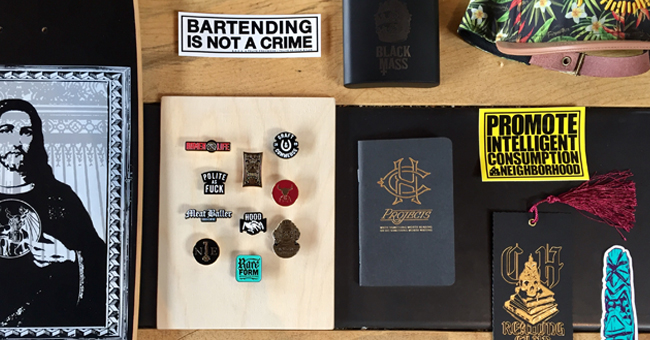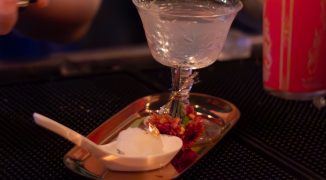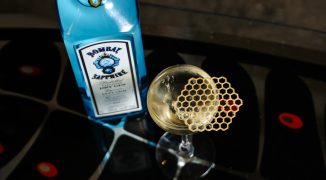For Kory Stetina, owner of Kindred in San Diego, it all started with punk rock. “Myself and a lot of our other leadership comes from a punk rock background, so we almost approach merchandise like you would if you were a band,” he says. “The merchandise for us is not about making money as much as it’s about building a community of like-minded people, whether they be your guests, or your employees, or your vendors.”
When Kindred opened, just under a year ago, they had a merchandise sheet with ten items for sale, a homage to the ones that used to be printed inside cassette tapes, slightly hidden under the draft list. Even before the doors were open, they had die-cut stickers and matchbooks to hand out to friends and at community events.
Stetina considers merchandise to be an important part of the guest experience. “I consider it almost on the same level as the music you play inside your space,” he says. “It says something about who you are to your guests.”
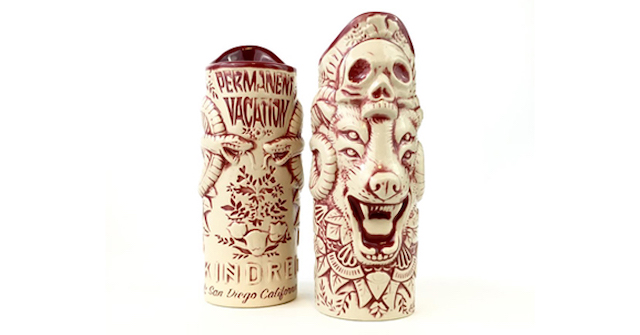
Kindred in San Diego finds inspiration for their merch in the DIY ethos of punk rock. (Photo: Courtesy of Kindred)
Arsalun Tafazoli, founder of CH Projects, which encompasses twelve different restaurant and bar concepts in San Diego, similarly sees merchandise as part of creating culture in and around his bars. “We wanted to use our merchandising to give people an inroad into what our culture is about,” he says. “We don’t use it as this really schticky thing, a lot of our stuff doesn’t even have our logo.” Although it might function as advertising, Tafazoli is more concerned with giving guests something to take with them. “You want to walk away with something tangible, something that you can remember that experience by.” Each place has a unique personality with merchandise to match.
Mary Allison Wright, owner of Rino Yacht Club in Denver, has chosen merchandise to connect with the lifestyles of her customers. “We want items that you want to take with you when you travel or that fit within your wardrobe and lifestyle for everyday use,” she says. “We want this to really be something that fits within what you’re already doing and that supports what you already have, so even if you haven’t been to the bar, this is something that you would want to wear.” Since they opened a little over two years ago, they’ve added travel bags, hats, julep cups and other items to complement the t-shirt and sweatshirt they opened with.
As a small business, Wright understands concern about taking a financial chance on merchandise. “You don’t have a ton of extra money lying around and so the decision to carry merchandise is one that you have to really put thought into because you’re taking on something that you’re not going to have an immediate turn around on and then you’re just hoping that people will want it,” she says. “For us that was sort of scary because it’s a giant check that you write and then you have all this stuff that sits. But it’s really cool when people come in and they say ‘oh my gosh, I love your logo’ or ‘I love this place, do you have a shirt?’ and you say ‘we actually do.’”
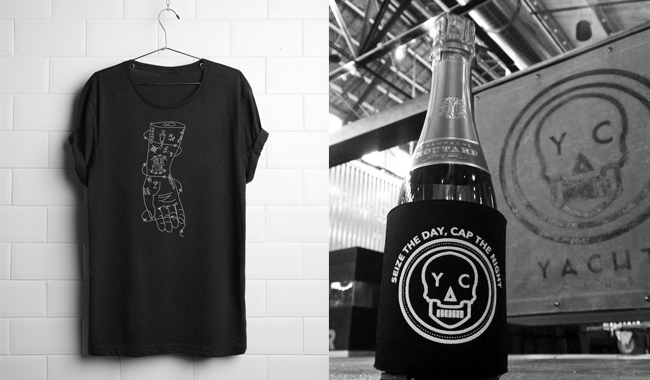 A few of the goods for sale at Rino Yacht Club, designed by Denver firm Wunder Werkz.
A few of the goods for sale at Rino Yacht Club, designed by Denver firm Wunder Werkz.
One of the most iconic bar merchandise programs began with a (not so simple) menu. “When we put a substantial amount of energy into our menus, that was something that we were very clearly aware our guests wanted to take home with them,” says Jack McGarry, co-owner of Dead Rabbit. “There’s a few ways you could you that. You could just let them take them and eat the cost, or there’s a potential revenue stream that you can tap into in selling the menus.” At Dead Rabbit, they opted for the latter.
Once the business had stabilized, McGarry and his partner started looking for other ways to expand the brand and continue telling the Dead Rabbit story. “With every bit of merchandise there’s a bit of fun to it, there’s a bit of story to it, and that goes for everything that we do,” he says. “There has to be a reason. You can’t just have something and expect a guest or a consumer to interact with it. For them to resonate with it it has to make an impression so that’s what we’re trying to constantly make sure happens. Just because there’s a t-shirt with the name of a bar on it there’s no reason for buying that t-shirt, not unless you’ve been a regular there for 10 years or something, there has to be a reason for everything.”
Over the years, McGarry has tried a variety of merchandise. “We’ve spent tens of thousands of dollars on many, many different ideas to see what works and what doesn’t work. We’re fortunate because Dead Rabbit and Blacktail are very successful bars so we kind of have the muscles to do that, albeit it’s our own money that we’re utilizing, but you have to make these mistakes to gain that experience. From our experience what I would say is: keep it simple. The things that people really wants are things like t-shirts or menus. Now you can do many other different things, but make sure that there’s an audience there for it and don’t overcomplicate it.”
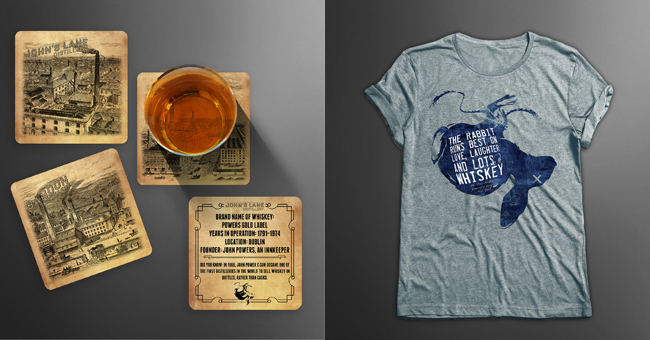 Dead Rabbit’s foray into retail began when guests wanted to buy the bar’s iconic menus. Now, it includes everything from t-shirts to coasters to coffee. (Photo: Courtesy of Dead Rabbit)
Dead Rabbit’s foray into retail began when guests wanted to buy the bar’s iconic menus. Now, it includes everything from t-shirts to coasters to coffee. (Photo: Courtesy of Dead Rabbit)
Early on, Dead Rabbit sold five different t-shirt designs. “So you start out with five, you’ve got male and female, which is ten, and then you have five different sizes which is 50 different shirt specifications, which was obviously far too much for us to keep on top of,” he says. “It’s fine if you were a Topshop or American Apparel, you can buy thousands of each size, but being a bar we had to constantly buy twenty or fifty of each size and it was just a constant headache. Now we’ve streamlined it down. We’ve cut it down to one shirt and we have that in five different sizes for the male and female so that’s brought it from fifty to ten.” With less to keep track of, it’s also easier to keep merchandise in stock, another of McGarry’s tips for success (and avoiding disgruntled guests).
Financially, the margins on merchandise aren’t nearly as high as those on drinks and food. If you’re not sure your products will sell, it can be even harder to take that risk, especially when your business is just getting started. Stetina worked with Tiki Farm to create a custom tiki mug which brought his logo to life. “I might like to purchase 3,000 tiki mugs so that I don’t have to design and press and order a bunch of times throughout the year, but to make 3,000 tiki mugs could be upwards of $30,000,” he says. The latest pressing of 750 mugs sold out in sixty days and Stetina is getting ready to make an order for 1,000 more.
Tafazoli sees a connection between the merchandise and the concept of the bar as influential on sales. Places with their own subculture and ethos usually do better from a merchandising perspective. According to Tafazoli, glassware sales are about four times more brisk at their tiki bar False Idol than at a less specific concept like Polite Provisions. Even so, having thoughtful merchandise for each concept is important to Tafazoli. “When you look at any of the best bars or any of these programs that are they are very well branded, they are very well-articulated and they invest in merchandising. I’m trying to think of a bar that doesn’t have a pretty well curated branding component to what they do.”
Although for many the goal is to break even on merchandise, it is possible to make money, especially if you have a consistent demand for your product. “With merchandise, you’re looking to get a 60 to 70% profit margin where with cocktails and food it’s 75 to 80%. When they’re coming in and they’re drinking cocktails and eating food and buying merchandise it makes sense to do it,” says McGarry. “For us it is definitely a worthwhile enterprise. If you look at 2015, we made $200,000 on it so that’s $100,000 worth of profit. We sell as much merchandise as we do wine, so it’s a significant revenue stream.”
If you are planning to sell merchandise, all of these bar owners agreed: make sure you’re selling a high quality product. “I would hate to give guests anything that I wouldn’t be impressed by, that goes down to even the very fabric that we use in the shirts. We make a decision based on quality and then we figure out the money side after, because the quality has to be there, otherwise it’s not sustainable,” says McGarry. “There’s many places that you’ll go to that you’ll see t-shirts from like Fruit of the Loom or other makes and they just don’t feel good on you. People buy what makes them feel good. They don’t buy what you do, they buy why you do it and how that makes them feel.”
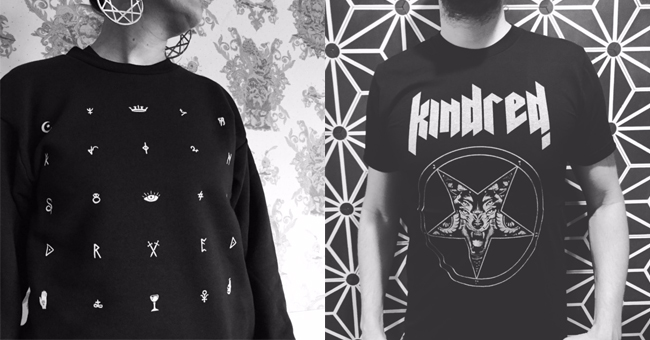 From ceramic tiki mugs to metal-esque t-shirts, Kindred’s promotional wares go way beyond the standard logo tees and coasters of yore.
From ceramic tiki mugs to metal-esque t-shirts, Kindred’s promotional wares go way beyond the standard logo tees and coasters of yore.


